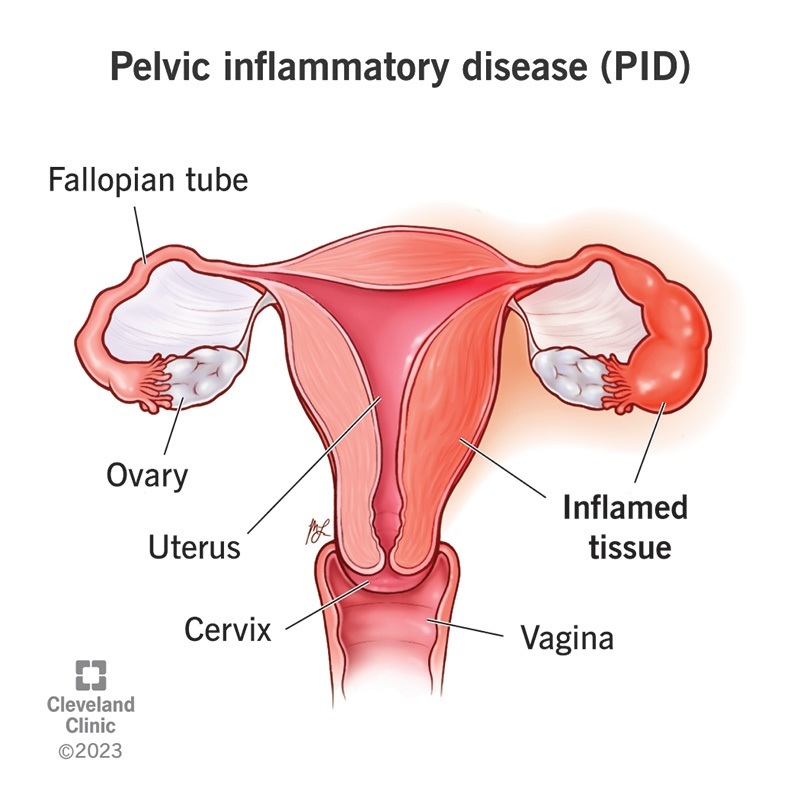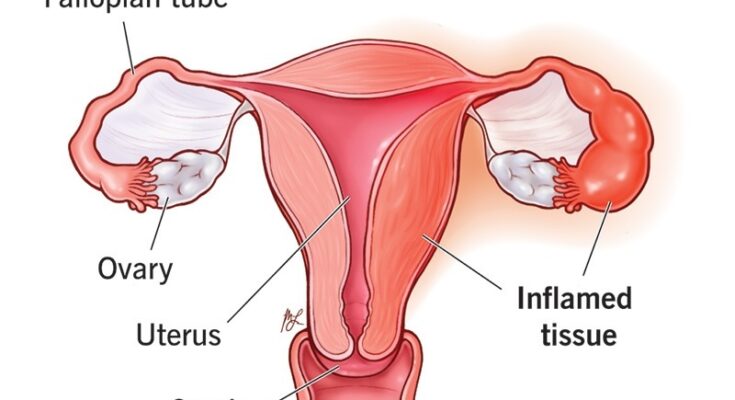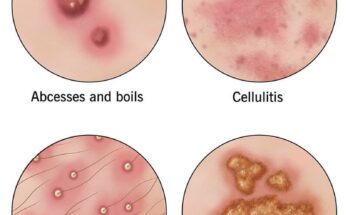Pelvic Inflammatory Disease (PID) is a serious infection of the female reproductive organs, including the uterus, fallopian tubes, and ovaries. If left untreated, PID can lead to chronic pain, infertility, and long-term health complications. Often a result of sexually transmitted infections (STIs), PID can also occur from non-sexually transmitted infections or after surgical procedures. While it is a preventable condition, many women still face the challenges associated with it.

What is Pelvic Inflammatory Disease (PID)?
Pelvic Inflammatory Disease (PID) refers to the infection and inflammation of a woman’s reproductive organs, most commonly caused by bacteria ascending from the vagina and cervix into the uterus, fallopian tubes, and ovaries. PID can range from mild to severe, with some women experiencing no symptoms at all, while others suffer from intense pain, fever, and long-term complications. If left untreated, PID can lead to scar tissue formation, chronic pelvic pain, infertility, and an increased risk of ectopic pregnancy.
Types of Pelvic Inflammatory Disease
PID can be classified into two main types based on the location and extent of the infection:
- Acute Pelvic Inflammatory Disease: This is the most common form and typically occurs suddenly with noticeable symptoms, such as severe pelvic pain, fever, and abnormal vaginal discharge. Acute PID can result from untreated sexually transmitted infections (STIs), such as chlamydia or gonorrhea.
- Chronic Pelvic Inflammatory Disease: If acute PID is not effectively treated, it can evolve into chronic PID. In this form, the infection persists, and women may experience ongoing pelvic pain, irregular menstruation, and difficulty becoming pregnant. Chronic PID is often more difficult to treat, as the infection may cause irreversible damage to the reproductive organs.
Symptoms and Causes
Symptoms of PID
The symptoms of PID can vary widely, from mild to severe, and some women may not experience any symptoms at all. Common signs and symptoms include:
- Pelvic or lower abdominal pain: Often dull or aching, and sometimes sharp or cramp-like.
- Abnormal vaginal discharge: This may be thick, yellow, or green, and have an unpleasant odor.
- Painful urination: A burning sensation while urinating.
- Painful intercourse: Discomfort or pain during sex, particularly deep penetration.
- Irregular menstrual bleeding: Spotting between periods or unusually heavy periods.
- Fever: A mild to high-grade fever may be present, especially with acute PID.
- Fatigue: A general feeling of being unwell or tired.
In severe cases, PID can lead to peritonitis (infection of the abdominal lining), abscesses in the ovaries or fallopian tubes, and long-term infertility.
Where do you feel PID pain?
Pelvic Inflammatory Disease (PID) typically causes pain in the lower abdomen and pelvic area. The location and intensity of the pain can vary depending on the severity and the extent of the infection. Many women with PID experience pain during sex, particularly deep penetration.
Causes of PID
The primary cause of PID is bacterial infection, most often originating from sexually transmitted infections (STIs). Some of the most common bacteria responsible for PID include:
- Chlamydia trachomatis: This bacteria is one of the most prevalent causes of PID and is often asymptomatic in its early stages.
- Neisseria gonorrhoeae: This bacterium causes gonorrhea, another leading cause of PID.
- Mycoplasma genitalium: An emerging STI pathogen that has been increasingly linked to PID.
- Other bacteria: Various types of bacteria that naturally reside in the vagina, such as Gardnerella vaginalis and Enterococcus, can also contribute to PID, especially following vaginal procedures, IUD insertion, or childbirth.
PID can also develop following non-sexually transmitted infections, such as after childbirth, miscarriage, or surgical procedures like a D&C (dilation and curettage) or abortion. In some cases, the infection can spread to the pelvic organs from other areas of the body, though this is much less common.
Is PID contagious?
Yes, Pelvic Inflammatory Disease (PID) can be considered contagious in the sense that it is often caused by sexually transmitted infections (STIs), such as chlamydia and gonorrhea, which are contagious.
How is pelvic inflammatory disease diagnosed?
If you suspect you might have Pelvic Inflammatory Disease (PID) or are experiencing symptoms such as pelvic pain, abnormal discharge, fever, or pain during sex, it’s essential to seek medical help promptly. PID can lead to severe complications, including infertility, chronic pain, and scarring, so early diagnosis and treatment are vital.
The diagnostic process for PID typically involves a combination of a physical exam, medical history, lab tests, ultrasound, and in some cases, laparoscopy to confirm the presence of the infection and identify the underlying cause. If diagnosed with PID, your healthcare provider will recommend appropriate treatment, which often includes antibiotics to target the infection and prevent further damage to the reproductive organs.
Prevention of PID
Preventing PID primarily involves reducing the risk of the infections that lead to it. Some effective prevention strategies include:
- Safe sexual practices: Using condoms during vaginal, oral, or anal sex can reduce the risk of STIs and, by extension, PID.
- Regular STI testing: Routine screening for STIs such as chlamydia and gonorrhea can help detect infections early, before they spread and cause PID.
- Prompt treatment of STIs: If diagnosed with an STI, it is important to follow prescribed treatments and ensure that both partners are treated to prevent reinfection.
- Limit the number of sexual partners: Reducing the number of sexual partners can lower the risk of exposure to STIs.
- Postpartum care: Proper hygiene and follow-up care after childbirth or miscarriage can reduce the risk of infections that lead to PID.
- Regular gynecological exams: Routine visits to the gynecologist can help identify potential issues before they develop into PID.
Stem Cell Therapy for PID
In recent years, stem cell therapy has been explored as a potential treatment for various reproductive health issues, including Pelvic Inflammatory Disease (PID). Stem cells have the ability to regenerate tissue and reduce inflammation, which makes them a promising option for treating the damage caused by chronic PID.
Stem cell therapy for PID focuses on using regenerative medicine to repair scar tissue in the fallopian tubes, ovaries, or uterus that has resulted from untreated or long-term PID. The stem cells, which may be harvested from the patient’s own body or a donor, are injected into the affected areas to promote tissue repair, reduce inflammation, and restore proper organ function. While this therapy is still in the experimental stages, early research suggests it could be effective in reducing pain and improving fertility in women suffering from chronic PID.
STEM CELL Product for Pelvic Inflammatory Disease Treatment

Spidex19 is an innovative biologic treatment that has recently been introduced as a potential solution for individuals suffering from PID. Unlike traditional antibiotics or pain management treatments, Spidex19 works at the cellular level to address the underlying inflammatory processes associated with PID.
Spidex19 is a targeted therapy that works by enhancing the body’s natural immune response to infection while also reducing excessive inflammation in the reproductive organs. It has shown promise in clinical trials as a treatment for chronic pelvic pain and scarring associated with PID, particularly in cases where traditional treatments have failed. By reducing inflammation and promoting healing at the cellular level, Spidex19 could help improve reproductive health outcomes for women suffering from PID-related infertility.
The therapy is designed to be less invasive and more effective than standard treatments, offering a new hope for women dealing with PID and its long-term effects.
Conclusion
Pelvic Inflammatory Disease (PID) is a serious condition that can lead to long-term health problems if left untreated, including chronic pain and infertility. By understanding its causes, symptoms, and preventive measures, women can take steps to protect their reproductive health. While traditional treatments like antibiotics and surgery have been effective in managing PID, newer approaches such as stem cell therapy and innovative treatments like Spidex19 offer exciting possibilities for improving outcomes, especially for women with chronic PID or those struggling with infertility.
If you suspect you may have PID or are dealing with its long-term effects, it is crucial to consult with a healthcare provider to explore the most appropriate treatment options. Spidex19 may represent the next step in the evolution of PID treatment, offering new hope for those in need of effective, long-term solutions.



